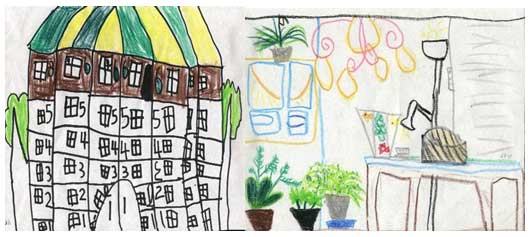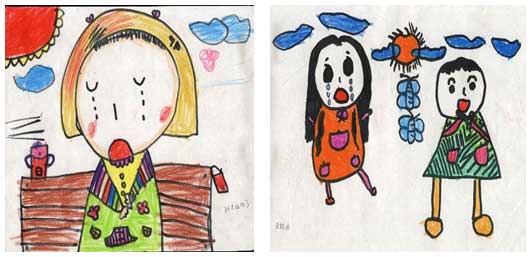|
Review and Reflections on Only-Child Research in China
Nianli Zhou, Ph.D., Associate Professor of East China Normal University, China
I. Introduction
I would like to take this occasion to thank Professor Tamotsu Fujinaga and many other senior-associates for providing me with their guidance and support that led me to give this presentation.
I am Chinese, but I will give my lecture in Japanese because most of the audience here is Japanese. Please excuse my poor Japanese pronunciation if it is not clear enough.
My presentation today is entitled Research Review and Reflection on Chinas Only Children.E In Japan and Korea, with recent birthrates (2005) of 1.26 and 1.08, respectively, many of the children are also only-child children. However, compared with Japan and Korea, the circumstances under which a Chinese family had an only one child were different. While Japanese and Korean parents have only one child out of choice, Chinese families did not have a choice due to the national policy implemented in 1979 that restricted having more than one child. In the past 5 to 6 years, however, the reasons for a Chinese familys having an only child have changed from external factors such the restrictive national policy to personal motivations of the parents. That means Chinese families have started to think that child rearing is, in fact, hard work, and requires tremendous time and energy. Currently, Japan, Korea, and China have their common issues regarding only-child children, and I will discuss what only-child children means in China.
Page Top
II. Overview and Findings of Research Literature
Since the Only Child PolicyEwas implemented 28 years ago, in 1979, China now has approximately 60 million only-child children. That means more than 35% of Chinese families have only one child. However, this is confined to the big cities. The Policy has not spread to some rural regions and ethnic communities. In fact, the Policy is not implemented in ethnic communities. As you can see from Table 1 below, studies on this issue have first been conducted from the viewpoints of psychology and education, and have later been examined sociologically and demographically.
Table 1 Classification of Research Literature on the Only Child
| |
Number of Literatures
(N) |
% |
| 1-Psychology |
83 |
27.2 |
| 2-Education |
126 |
41.3 |
| 3-Sociology |
48 |
15.7 |
| 4-Demography |
18 |
5.9 |
| 5-Physical Education |
18 |
5.9 |
| 6-Other |
16 |
5.2 |
| Total |
305 |
100.0 |

The above graph Evolution of StudiesEshows the number of literature published from 1980 to the present, and indicates increasing interest in this issue. Next, based on much of the literature mentioned above, I will discuss how the research on only-child children has been conducted.
1. Are only-child children problem childrenE
Dr. Hall, the child psychologist, says, Being an only child is a disease in itself.EResults of early studies conducted between 1980 and 1981, soon after the Policy was implemented, reported that only-child children were certainly problem children.EIt was indicated that only-child children are delicate. The results also suggested that only-child children tend to be frustrated, have a sense of failure, lack endurance, be impulsive, play by ones own rules, and be particularly lazy. The cause of these problems that have had an enormous social impact can be found in the following factors. One is over-nourishment. Currently, in large cities in China, parents do not feed their child a normal diet, but rather high-protein foods or supplements. Children in large cities in China also display two types of poor physical development: obesity and extreme thinness. 20% of Chinese children are overweight. Obesity is not just a problem in western countries any more. Extreme thinness probably results from an unbalanced diet and lack of exercise. Another factor is, as Professor Yu Wei mentioned this morning, Chinese parentsEtendency to put much importance on their childs academic ability and educational achievement. We conducted a study five years ago. I believe Ms. Mariko Ichimi has also conducted such a study. The survey asked parents what expectations they had of their childs educational achievement. 95% of the parents expect their child to graduate from university. Among them, 75% wish the child to have a doctoral degree. However, the parents do not seem to be interested in nurturing their childs social emotion, a point that was emphasized by Professor Wei this morning. Our very brief investigation found that there are two questions that Chinese parents often ask their child after they come back from kindergarten. One is about academic ability, such as the kinds of words and math skills the child learned that day; and what the child learned to do. Another question is what the child ate at school. Questions about whether or not the child had fun at school were never asked.
2. What are the common personalities traits of the only child?
This issue was first investigated in 1988 in a study entitled Non-only-child" Children. 1,465 elementary school children in Chang Chung, Jilin Provice participated in this study. Although the backgrounds of the parents are almost the same, the result indicates that only-child children tend to be more willing to help others than non-only-child children. In other words, only-child children show a high degree of sociality. Another trait found in only-child children is that they are likely to be less introverted than non-only-child children. This result is based on a comparison between 73 only-child children and 188 non-only-child children among undergraduate students of a university in Tianjin. The third trait is that only-child children show a lesser degree of anxiety including depression than non-only-child children. The result was obtained from the students of Wuhan University. In sum, these results suggest that only-child children are more stable, extroverted and pro-social. These traits are inconsistent with the earlier studies.
3. Are only-child children well developed socially?
The result indicates that, in general, there is no difference between only-child children and non-only-child children. The study on childrens self-image with 87 elementary school children in Xian suggests that it is not only-child children but rather non-only-child children who are frailer. The result is consistent with what Professor Wei mentioned this morning. Another study with 200 to 600 elementary school children and junior high school students in Nanjing and Inner Mongolia shows that only-child children have a stronger motivation to interact socially and better social skills compared to non-only-child children.
4. Are there more child-rearing problems in the family with an only child?
It is often said that only-child children are doted upon in a negative meaning. Surprisingly, however, the result of the study conducted in three cities in Hubei Province and Shenzhen City indicates that the parents and their only-child children interact more frequently and have built a closer relationship than the parents and their non-only-child children. According to the results, atmosphere of family is warmer, the parentsEacademic background is relatively higher, and parents have higher expectations of the child. These results are inconsistent with the earlier studies. We will have to ask the reason for these inconsistent results.
In addition, there is another big problem in China, people called over-birth guerillasEwho move from one location to another to have more than one child without the authorities noticing. In urban areas, if families have two children for no specific reason (over- birthE, they are severely punished by either having to pay a high fine or losing their job. Also, China is still a male-dominated society, and families tend to want a boy rather than a girl. So, if parents have two girls as the first and second child, they are likely to keep on drifting from town to town, for example from Shanghai to Wuhan and from Wuhan to Nanjing, aiming to have a boy as the third child. These parents are called over-birth guerillas.EOne of my friends was raised in such distressing circumstances. She is the first child and her three siblings are all girls. The children under such circumstances live in unstable physical environment and have an economic disadvantage. Therefore, we are concerned that children might have unseen mental health problems related to the cerebral development that Professor Wei also pointed out, including anxiety and inferior complex.
The results of our investigation reveal that there is no point in comparing only-child children with non-only-child children. In my opinion, it is not the matter of the number of children, but we need to focus on the common problems of the caregiver and children themselves in a society with a declining birthrate. The presentations given today highlighted the prenatal environment and the traits of children from the perspectives of physiology and neuroscience. I will now discuss these issues from the viewpoint of the parent-child relationship.
Page Top
III. Only-Child Children from the Perspective of the Parent-Child Relationship
I came back to China in 1998, but, even after returning from Japan, I have continued conducting various studies under the supervision of Professor Fujinaga, a developmental psychologist and other senior-associates. The caregiver issues include inconsistency and excessiveness in showing affection. Parents dote upon their child and try to fulfill his/her desires in everyday life as much as possible. On the other hand, parents are extremely demanding when it comes to their child acquiring academic skills/knowledge. Some parents even hit their child if he/she does not study enough. Some associates tell me that China does not seem to have problems of child abuse, but that is not true. Regarding Chinese parentsEexpectations for their child, they place a disproportionate emphasis on their childs educational achievement. Also, parents pay too much attention on very narrow educational content. In other words, social competence is not emphasized very much; only intelligence is given importance. Nor do parents have a range of techniques to use in educating their children. My research suggests that in many cases parents have very simple ideas of how to motivate their child to study more. They promise to buy their child toys when the child scores 85 points or game software for 95 points. In addition, parents themselves have poor self-control. In one case, a mother whose child failed a university entrance examination killed herself.
Now we will discuss how children are aware of this type of parent-child relationship. This is just a single case, but please look at these two pictures drawn by 4-year old and 5-year-old children. We asked the children to draw a picture of their houseE and we were shocked. They drew it in detailall rooms of the building are numbered. However, the picture lacked people Ethe child did not depict any people. I was surprised that for these children, houseEdid not mean homeEor family,Ebut just a physical space.

[Childrens image of their house]
We also asked them to freely express that I am sadEin a picture. The picture emphasized nothing but tears. Tears just kept falling down on a persons face and even the white clouds in the sky turned blue.EHence, although parents say they do their best for their child, if parents value economic and academic life too much, children have no room left for affection toward their parents. Parents might save millions yuan in the bank, and their childs heart is full of sadness. Of course, some problems are congenital, related to temperament, or problems of attachment, or lack of emotional control or emotional regulation.

[Childrens pictures expressing their sadness]
Finally, Id like to summarize my ideas briefly on what we should do consider our tasks to be as educators and parents. Whether a child is an only child or not does not matter. Rather, I believe it is important for children to develop the most appropriate emotions during each stage of their precious childhood. We should ensure that every child wears the most comfortable shoes and can embark on life with confidence.
Thank you for your kind attention.
Page Top
|